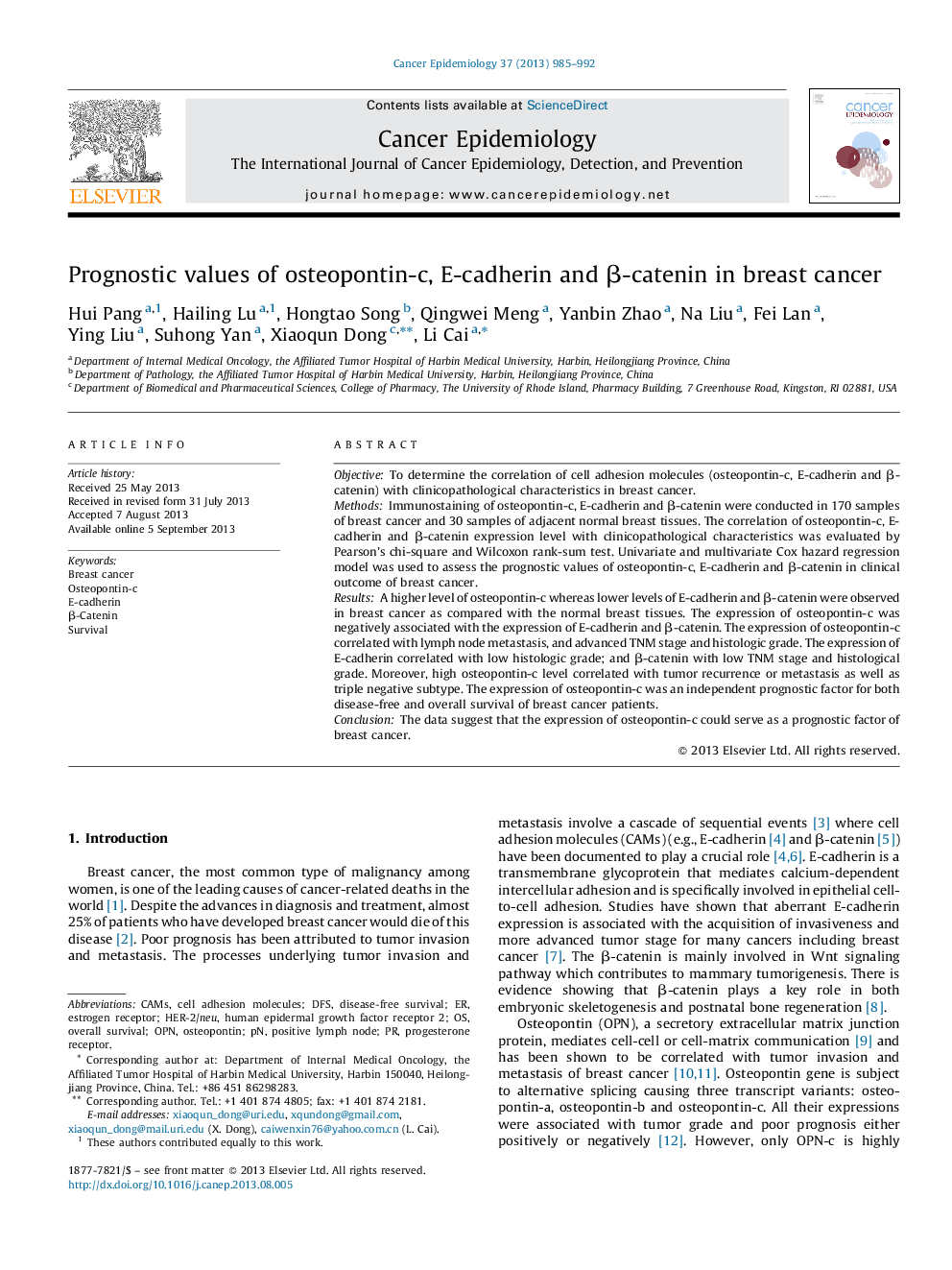| Article ID | Journal | Published Year | Pages | File Type |
|---|---|---|---|---|
| 2108869 | Cancer Epidemiology | 2013 | 8 Pages |
ObjectiveTo determine the correlation of cell adhesion molecules (osteopontin-c, E-cadherin and β-catenin) with clinicopathological characteristics in breast cancer.MethodsImmunostaining of osteopontin-c, E-cadherin and β-catenin were conducted in 170 samples of breast cancer and 30 samples of adjacent normal breast tissues. The correlation of osteopontin-c, E-cadherin and β-catenin expression level with clinicopathological characteristics was evaluated by Pearson's chi-square and Wilcoxon rank-sum test. Univariate and multivariate Cox hazard regression model was used to assess the prognostic values of osteopontin-c, E-cadherin and β-catenin in clinical outcome of breast cancer.ResultsA higher level of osteopontin-c whereas lower levels of E-cadherin and β-catenin were observed in breast cancer as compared with the normal breast tissues. The expression of osteopontin-c was negatively associated with the expression of E-cadherin and β-catenin. The expression of osteopontin-c correlated with lymph node metastasis, and advanced TNM stage and histologic grade. The expression of E-cadherin correlated with low histologic grade; and β-catenin with low TNM stage and histological grade. Moreover, high osteopontin-c level correlated with tumor recurrence or metastasis as well as triple negative subtype. The expression of osteopontin-c was an independent prognostic factor for both disease-free and overall survival of breast cancer patients.ConclusionThe data suggest that the expression of osteopontin-c could serve as a prognostic factor of breast cancer.
